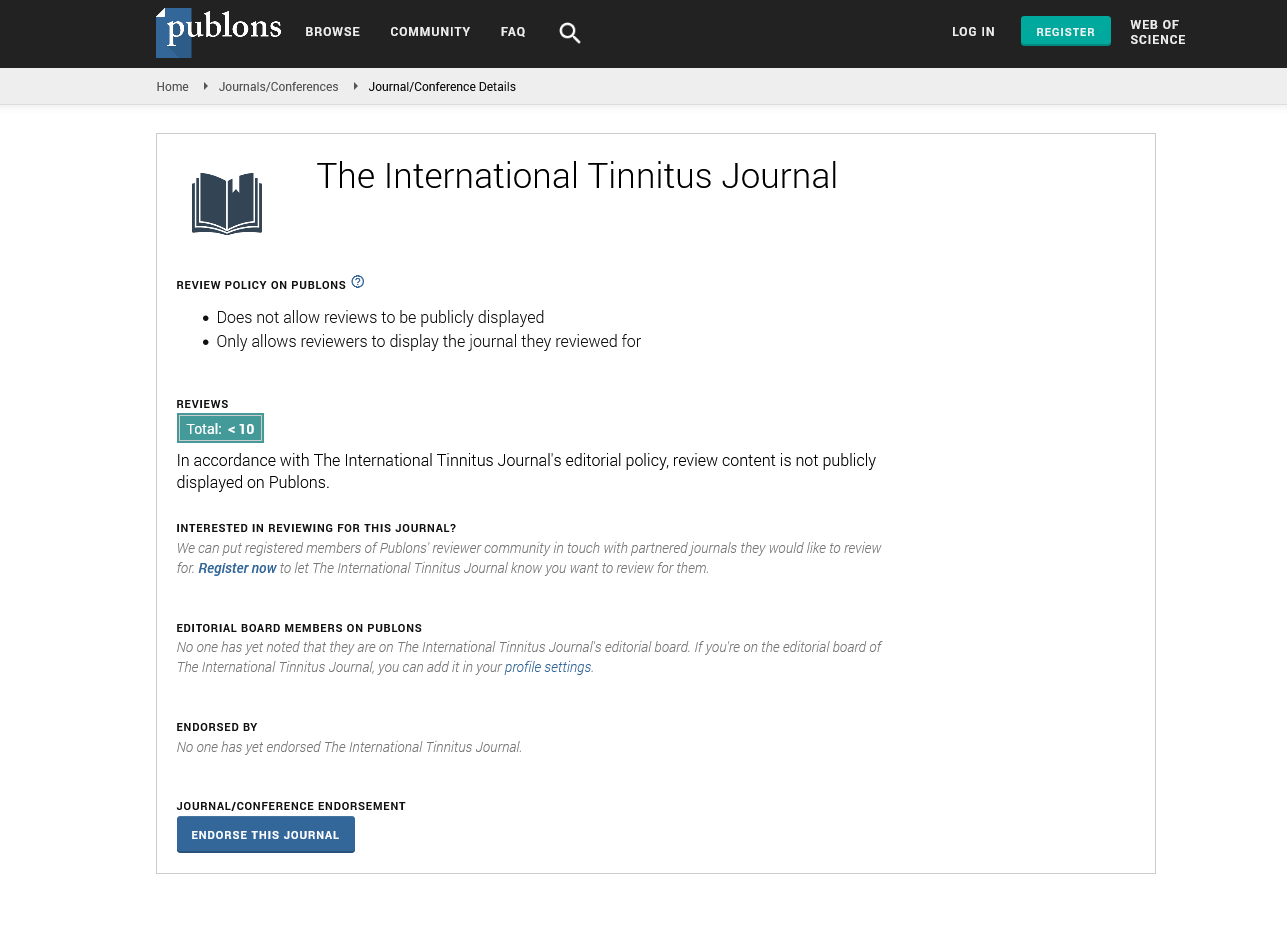The International Tinnitus Journal
Official Journal of the Neurootological and Equilibriometric Society
Official Journal of the Brazil Federal District Otorhinolaryngologist Society
ISSN: 0946-5448

Google scholar citation report
Citations : 12717
The International Tinnitus Journal received 12717 citations as per google scholar report
The International Tinnitus Journal peer review process verified at publons
Indexed In
- Excerpta Medica
- Scimago
- SCOPUS
- Publons
- EMBASE
- Google Scholar
- Euro Pub
- CAS Source Index (CASSI)
- Index Medicus
- Medline
- PubMed
- UGC
- EBSCO
Abstract
Development of a temporary threshold shift model of chronic noise-induced tinnitus with evidence of altered auditory signaling pathway inhibition
Author(s):Xiaoping Du, Jianzhong Lu, Zachary Yokell, Qunfeng Cai, Weihua Cheng, Don Nakmali, Wei Li, Richard D Kopke, Matthew B. West
Our laboratory has developed a unique rodent model of chronic noise-induced tinnitus (NIT) that results from an acoustic overexposure trauma associated with multi-frequency temporary threshold shifts (TTSs) during the acute phase of the injury, which are resolved to near baseline levels by four weeks post-exposure (i.e. < 5 dB of permanent threshold shifts). The resultant multi-frequency manifestations of NIT evidenced by the startle reflex inhibition test in this model coincide with significant reductions in the sizes of outer hair cell (OHC) efferent termini across the same tonotopic frequency range, as well as significant changes in tinnitus-related biomarkers in the auditory system as objective evidence for the NIT. Notably, this TTS NIT model does not induce any significant HC loss and only presents with afferent ribbon synapse loss in the high tonotopic frequency region outside of the putative histopathological area of emphasis for tinnitus, creating a unique opportunity to study the functional consequences of reduced efferent signaling and tinnitus-related biomarker expression in the auditory system on the development and specification of a chronic tinnitus percept without confounding variables, such as HC loss or widespread de-afferentation that add considerable complexity to the relevant electrophysiological evaluations. Significant positive correlation between expression of glutamate receptor 2 in the central auditory system and tinnitus score in this TTS NIT model provides evidence that altered glutamate responsivity in the CNS is linked to the development of NIT. We believe that this TTS NIT model can serve as a strong candidate for targeted tinnitus-related pharmaceutical studies.
Text PDFShare this



